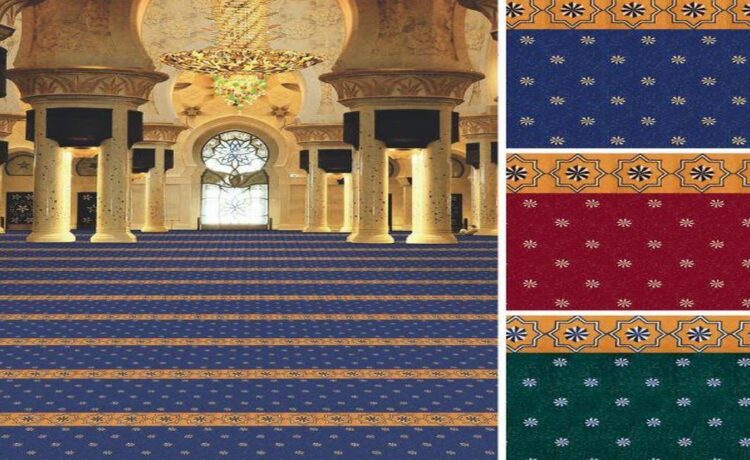Mosque carpets are not just ordinary rugs. They are woven with intricate designs, vibrant colors, and premium materials that reflect the creativity, culture, and faith of the Muslim world. From the towering domes of Istanbul’s Blue Mosque to the humble prayer halls of rural villages, mosque carpets adorn the floors of countless places of worship and sanctity.
The art of mosque carpet weaving dates back to the 7th century when Muslim traders brought Persian and Central Asian carpets to the Arabian Peninsula. The demand for prayer rugs increased as Islam spread across the world, and local craftsmen developed their own styles and techniques. Today, mosque carpets are produced in countries such as Iran, Turkey, Afghanistan, Pakistan, and India, each with their distinct features and qualities.
What are Remarkable Aspects of mosque carpets?
One of the most remarkable aspects of mosque carpets is their symbolism. The intricate patterns, geometric shapes, and calligraphic inscriptions on the carpets convey deep spiritual and cultural meanings. For example, the mihrab, a niche in the carpet that indicates the direction of Mecca, represents the focal point of Islamic worship. The floral motifs, which often include tulips, roses, and carnations, symbolize paradise and eternal beauty. The arabesque patterns, which consist of intertwining lines and curves, evoke the unity and harmony of the universe.
Another fascinating feature of mosque carpets is their beauty. The vibrant colors, such as red, blue, green, and yellow, are obtained from natural dyes that are extracted from plants, minerals, and insects. The wool, silk, and cotton used in the carpets are carefully selected and prepared to achieve the desired texture, softness, and durability. The weaving process, which can take months or even years, involves skilled artisans who use hand-knotted or hand-tufted techniques to create intricate designs and patterns.
Why Are Mosque Carpets Essential in Islamic Culture?
Mosque carpets are an integral part of Islamic culture and worship. They serve as a physical and spiritual connection between the worshipper and the divine, as well as a symbol of the community’s unity and devotion. The carpets not only provide a clean and comfortable surface for prayer but also evoke a sense of reverence, humility, and awe.
In Islamic tradition, cleanliness is a fundamental aspect of worship. Muslims are required to perform ablution or wudu, a ritual washing of the hands, face, and feet, before prayer. The mosque carpets, therefore, play a crucial role in maintaining hygiene and purity. The carpets are usually cleaned and washed regularly, and some mosques even have dedicated carpet cleaning machines.
Moreover, mosque carpets represent the spiritual journey of the worshipper. As the worshipper steps on the carpet and bows down to pray, they enter into a state of submission and surrender to Allah. The carpet serves as a symbol of the earth and the ground, reminding the worshipper of their humble origin and ultimate destination. The carpet also acts as a unifying element, bringing together people of different backgrounds, nationalities, and languages in a common prayer.











